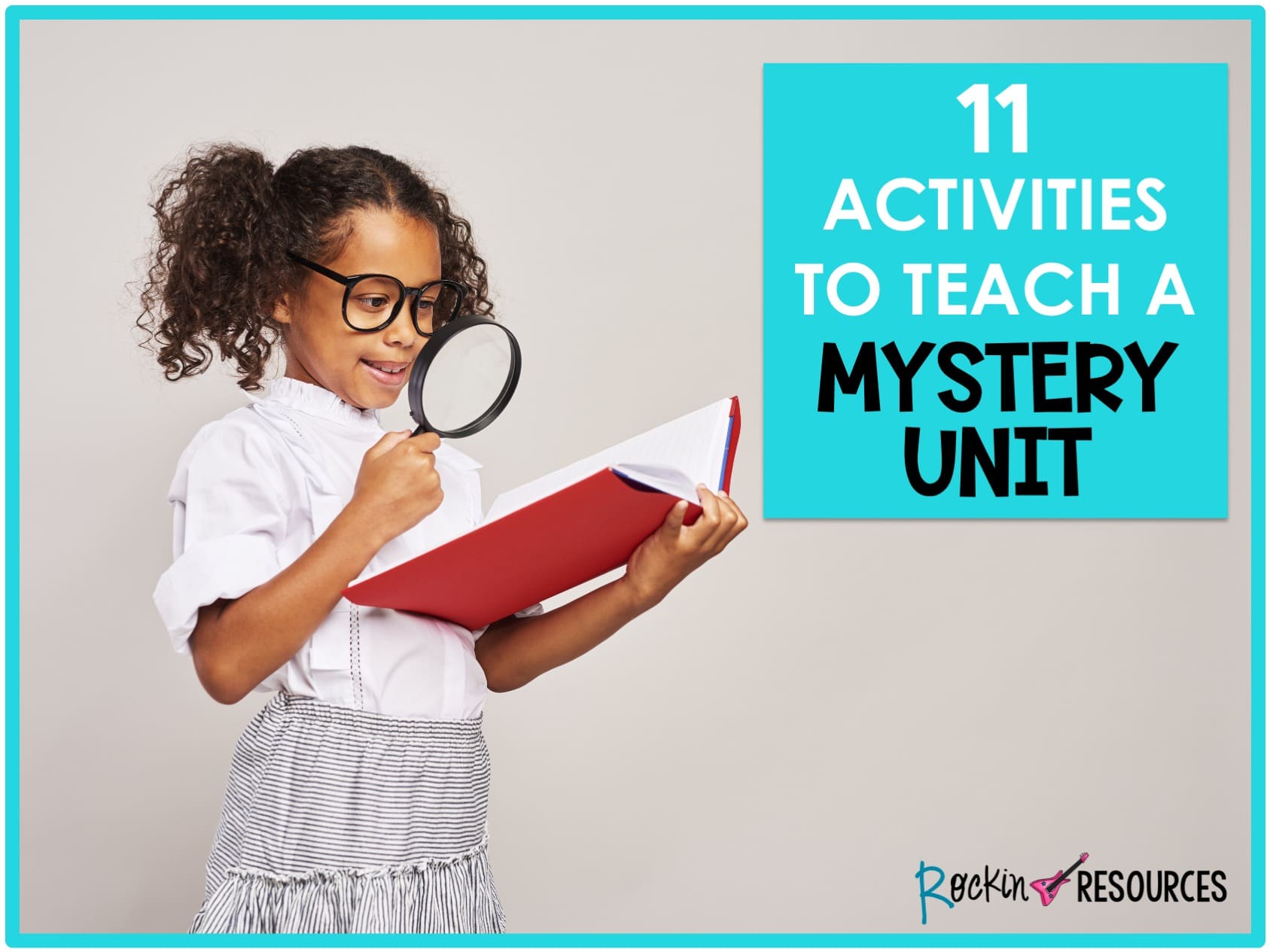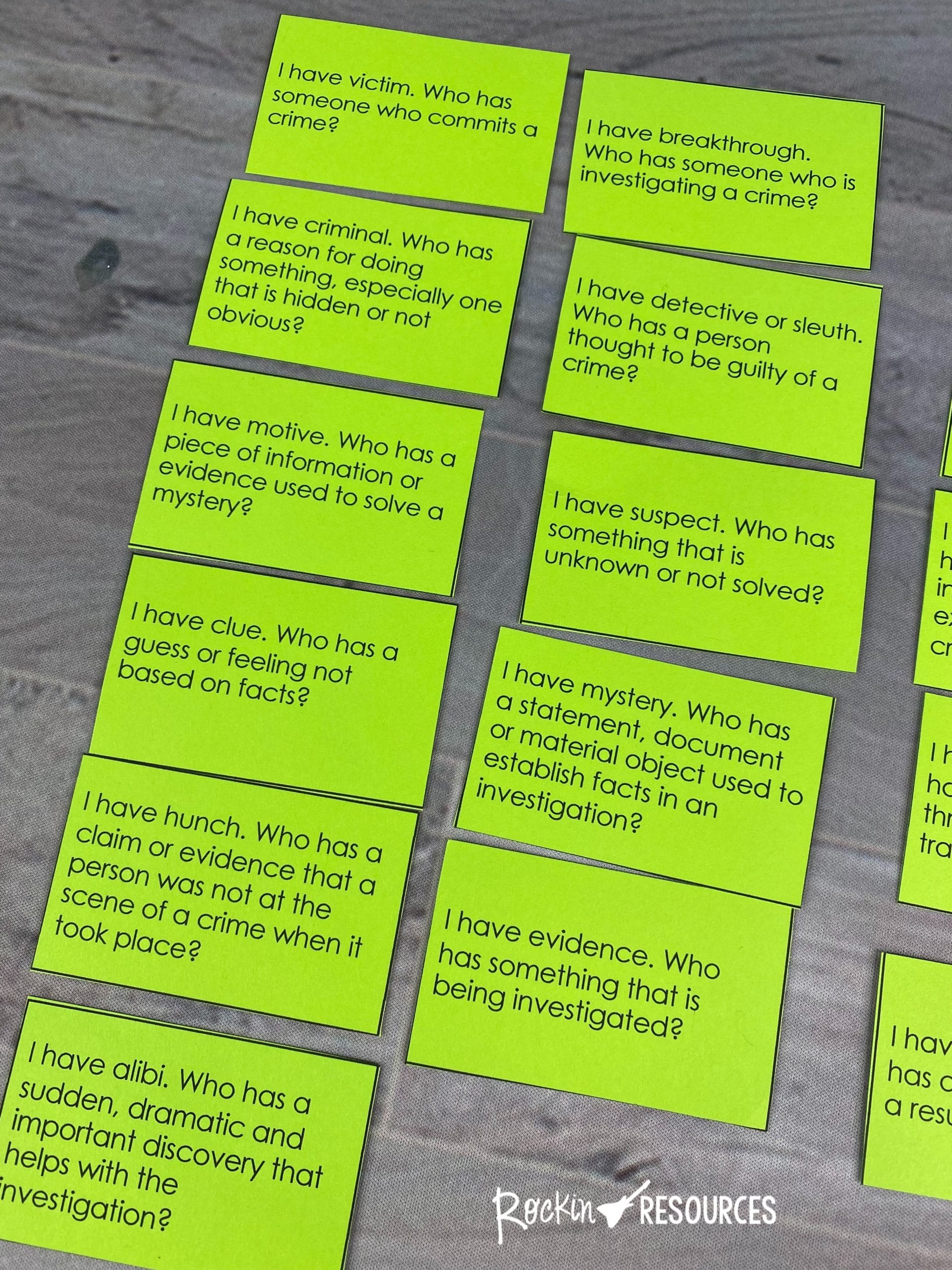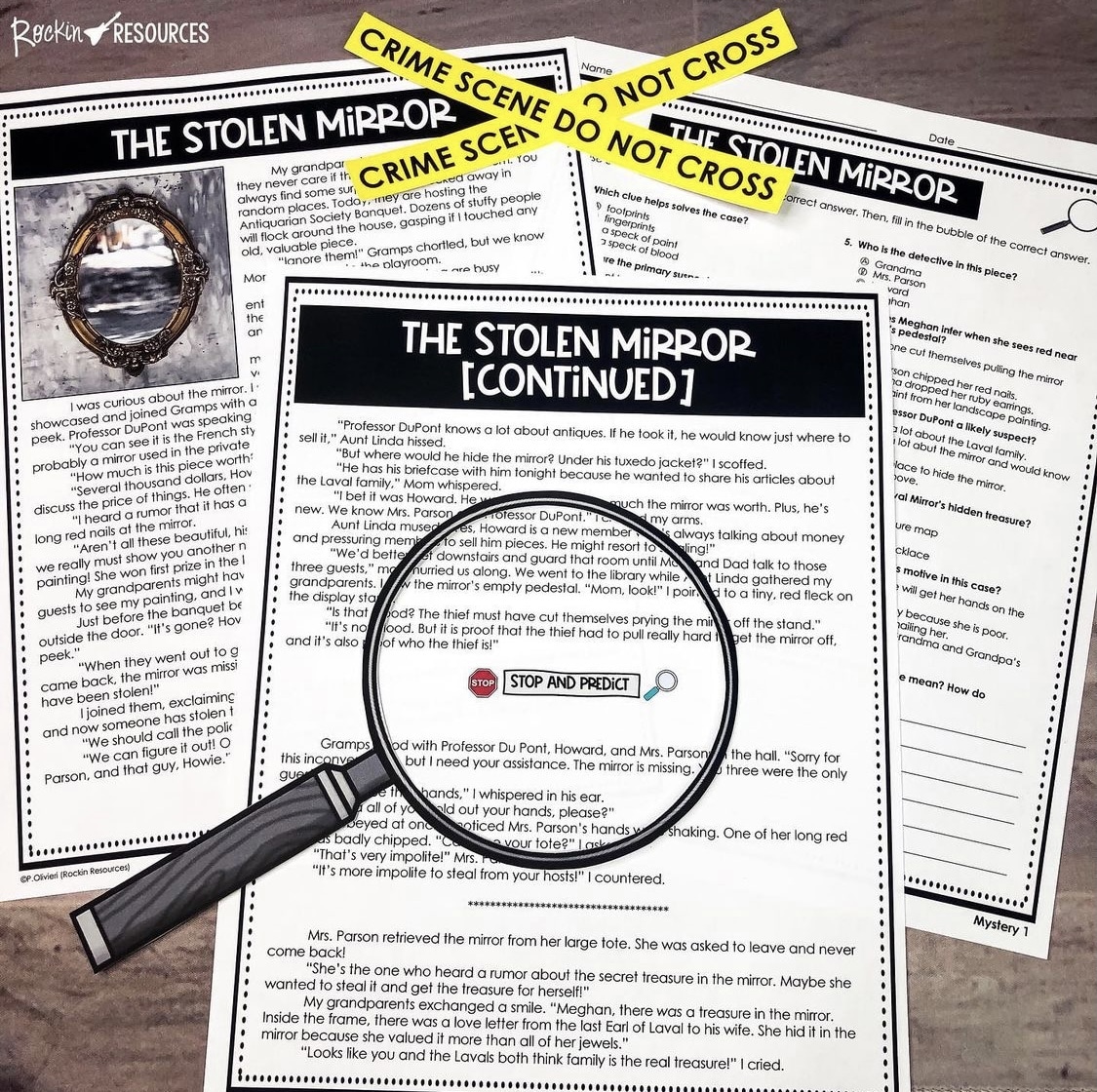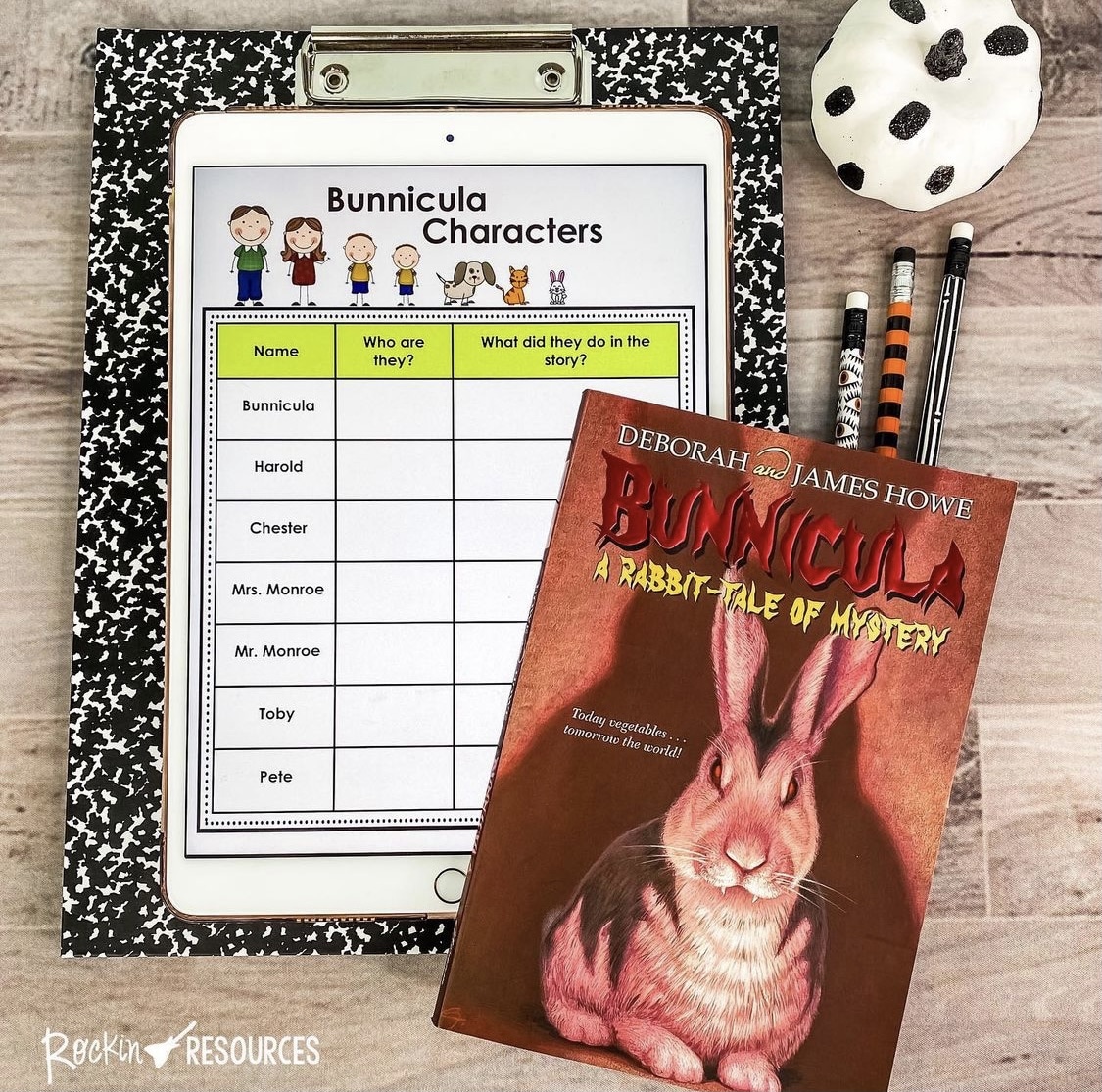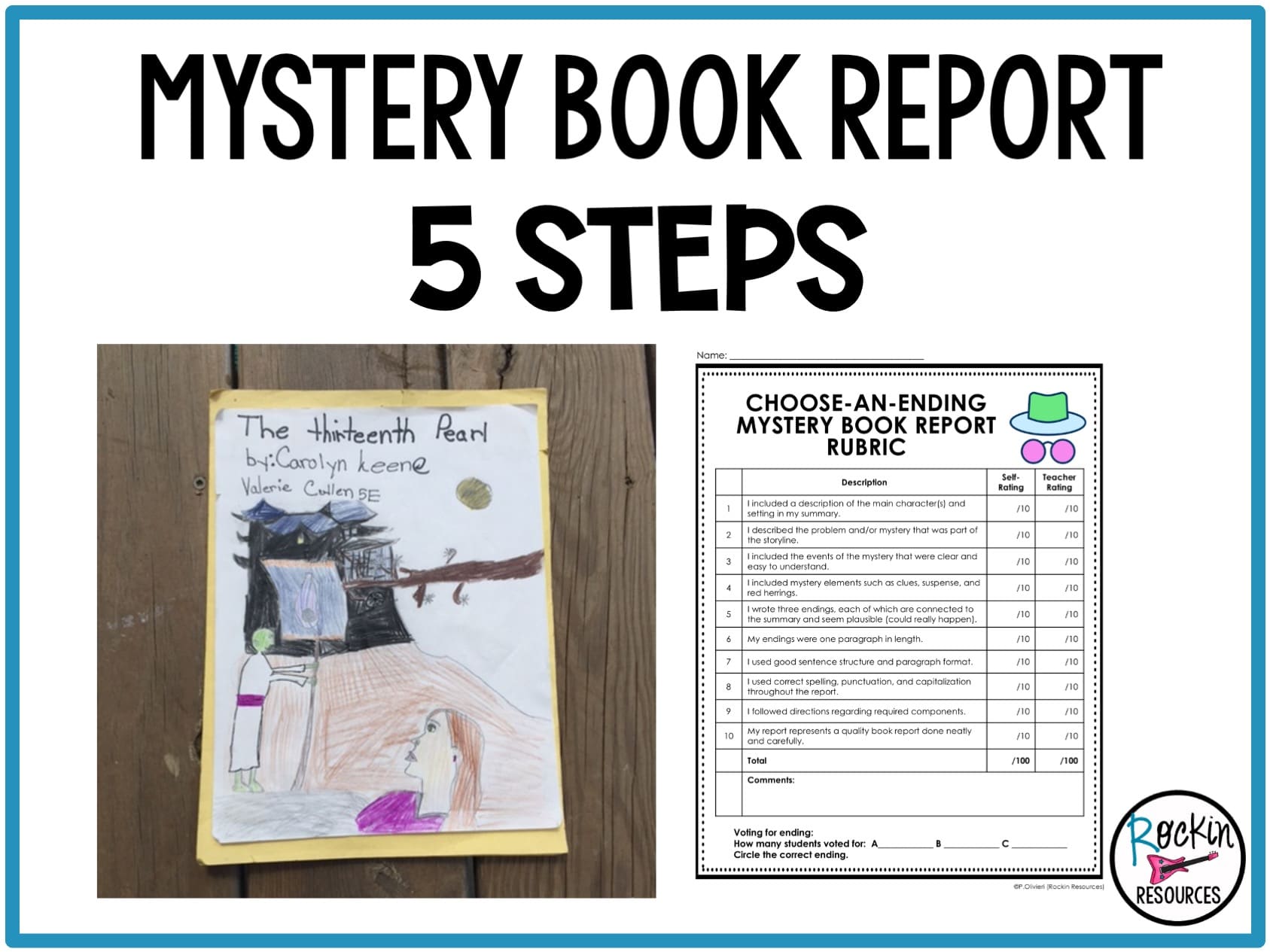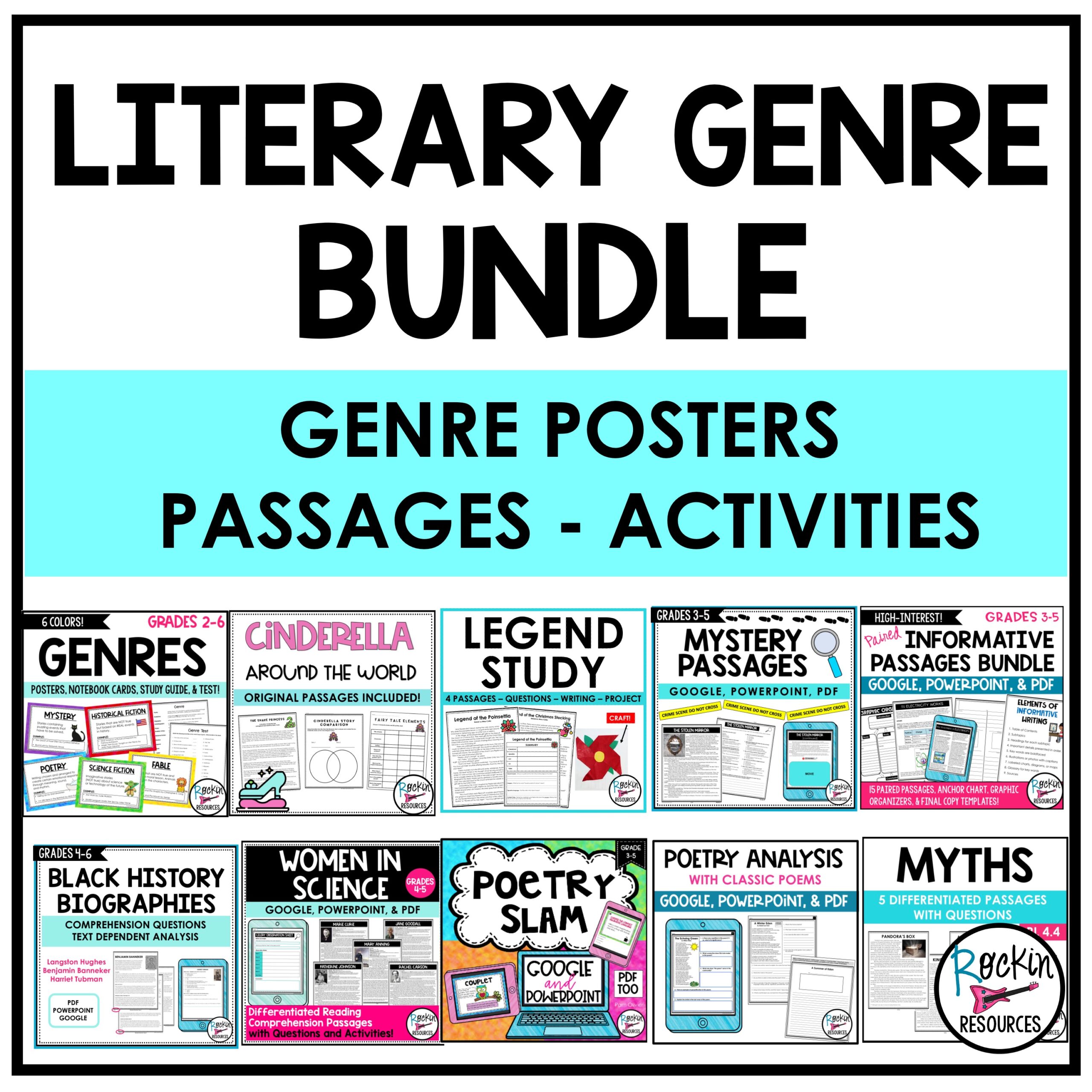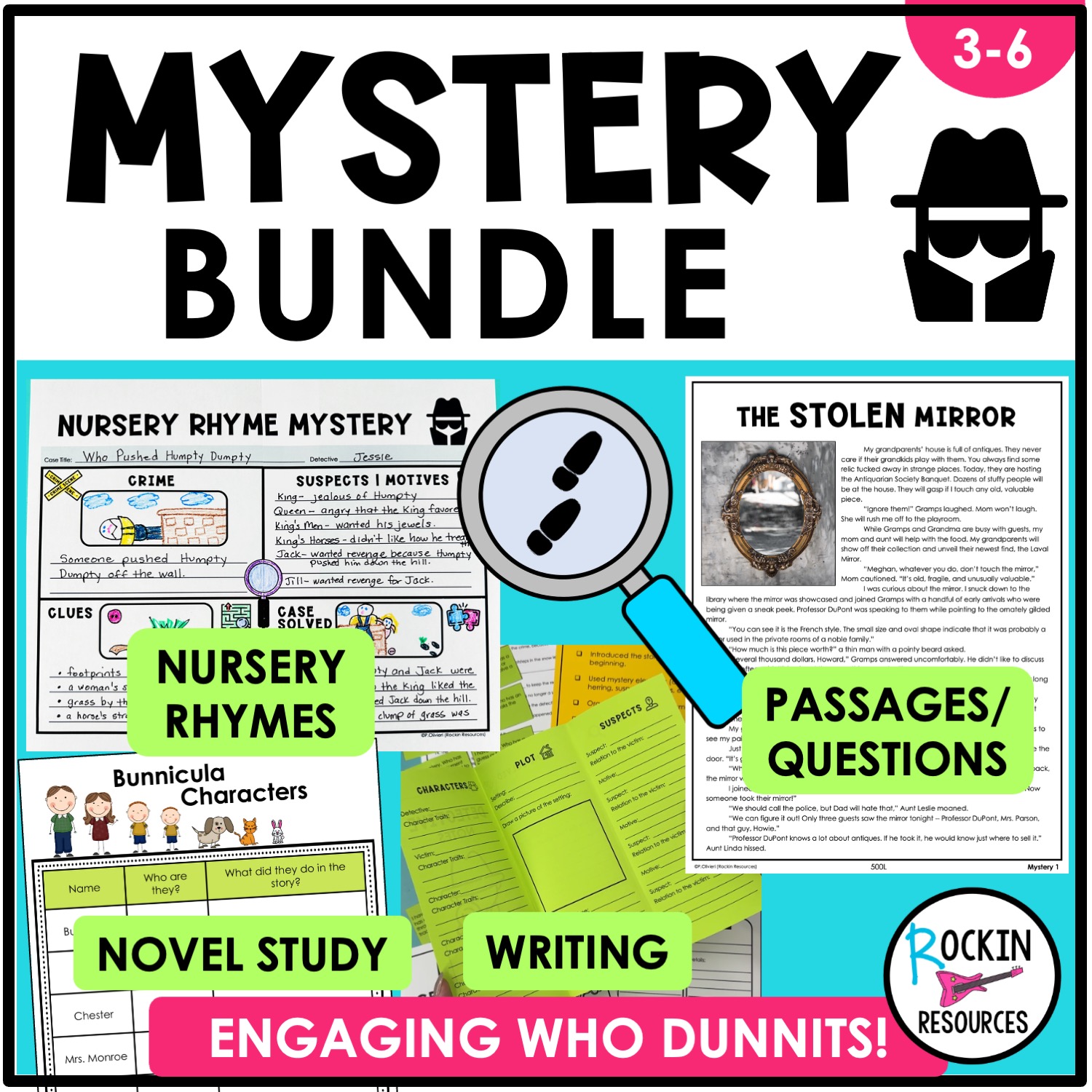A mystery unit is perfect for a classroom of curious kids! There’s excitement in the suspense, significance in every detail…. and spooky thrills to keep students engaged throughout the class’ mystery literature studies. Mystery units can work in amazing ways by integrating problem-solving and close-reading skills in a painless and fun way. Below is a list of 11 ACTIVITIES FOR TEACHING A MYSTERY UNIT with games, reading and writing activities, and sleuthing a plenty!
1. MYSTERY ELEMENTS:
Help students learn about the mystery elements: detective, sleuth, witness, suspect, clues, red herring, case, crime, victim, alibi, evidence, hunch, motive, suspense, breakthrough, deduction, criminal. Play I HAVE WHO HAS game with these vocabulary terms. (These can be found in the mystery writing unit below.)
2. MAGNIFYING GLASSES:
During the whole mystery study, have students use plastic magnifying glasses to assist in their detective skills. It will help motivate the students to learn the mystery genre. You can see a variety of magnifying glasses here on Amazon.
3. MYSTERY PASSAGES:
Read short passages to review the mystery elements and predict the mystery. This Mystery Passages resource engages students with 4 intriguing mystery passages about stolen mirrors, missing persons, haunted museums, and locked-up shops! Accompanied by reading comprehension questions that relate to the elements of the mystery genre, each passage has “STOP AND PREDICT” spots for students to use their reading skills to make predictions through the course of the story. After each passage is a 10-question worksheet with 9 multiple choice and 1 short answer to determine students’ reading comprehension and sleuthing skills.
4. MYSTERY BOOKS:
Read several mysteries in class and discuss the mystery elements. Check out this blog post for 11 MENTOR TEXT FOR TEACHING MYSTERIES. Use them as read-alouds, class book studies, and independent reading. The more they read, the more they will become familiar with the genre.
5. MYSTERY BOOK STUDY:
Our Rockin’ Resources Bunnicula Unit can be used alongside the book, Bunnicula, for whole group, small group, literacy centers, book clubs, or mystery studies work! This complete literacy unit contains reading comprehension questions, writing exercises, and other activities! The Bunnicula unit is available for digital use in Google Slides and PowerPoint, too!
6. CLUE GAME:
What better way to discuss mysteries than to play the board game, Clue? Discover who killed a fictional character, what room, and which weapon was used through many clues. This will strengthen deductive reasoning and logistical thinking skills! Order the game HERE.

7. NURSERY RHYME MYSTERY:
Students must break out their detective skills to unravel the crime, suspects and motives, clues, and solutions to a variety of nursery rhyme crimes. With Humpty Dumpty, Jack and Jill, and more, students will have fun sleuthing over classic rhymes retold. Who pushed Humpty Dumpty off the wall and why? Perfect for a mystery genre unit, this Nursery Rhyme Mystery activity is a big hit within upper elementary classes!
8. MYSTERY WRITING:
This is one of my favorite writing activities! Students are really engaged and love coming up with their own mystery. After reading some of the listed mystery books, you can use the Mystery Writing resource to transform student’s knowledge of mystery from passively reading to actively writing their own mystery! Within this printable document set are Private Detective badges, a mystery elements vocabulary set and I Have Who Has game, a tri-fold detective note-taking page, and a comprehensive collection of slides for teaching how to write a mystery through the writing process.
9. SCOOBY-DOO:
Play a Scooby-Doo video and have students detect the mystery elements! Every Scooby-Doo movie offers the perfect suspense and other mystery elements. There is usually a red herring or some kind of twist too! Give students a chart of the elements and have them write down what they find during the movie! https://amzn.to/3sbDt5V
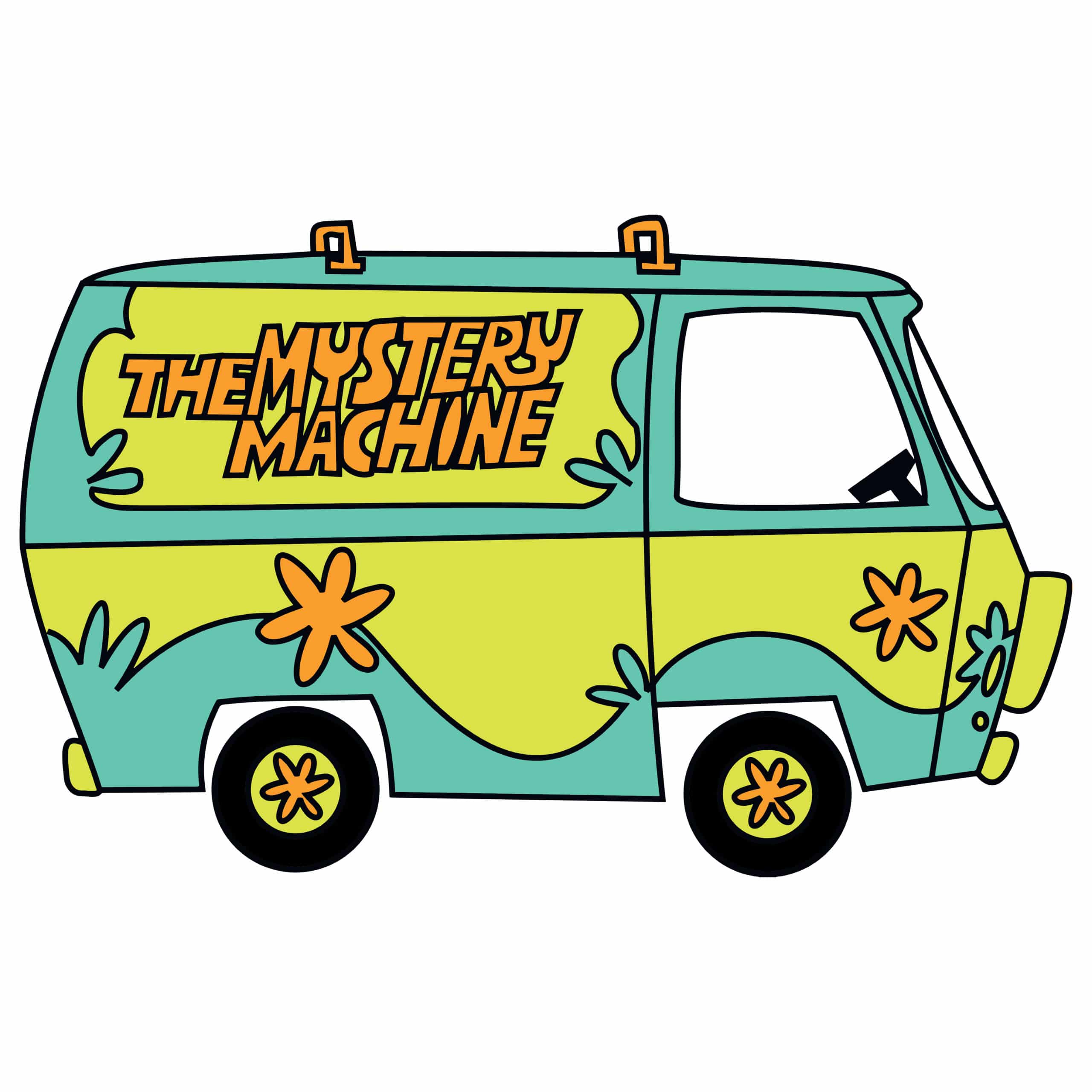
10. WINK MURDER OR MURDER HANDSHAKE:
These games don’t require a physical game. Learn how to play them HERE.

11. BUILDING A MYSTERY GROUP ACTIVITY:
Put students in groups. Provide a big piece of paper. Each student gets a section of the paper to write and draw their portion.
Student 1: Develops characters
Student 2: Tells the setting and the crime (keep it away from violence—missing or kidnapping works)
Student 3: Tells the suspects and motives
Student 4: Gives the clues
Student 5: Tells the solution
Present to class

I hope you found some of these mysterious activities will work with your kiddos! Turn off the lights and get spooking!

See Similar Blog Posts:
Discover Related Resources
-
LITERARY GENRES Bundle – Mystery Genre – Fairy Tale Genre – Biographies – Poetry
Original price was: $51.93.$39.00Current price is: $39.00. -
Mystery Unit Bundle
Original price was: $15.97.$11.99Current price is: $11.99. -
Nursery Rhyme Mystery
$3.00
Share this Post on Pinterest:


